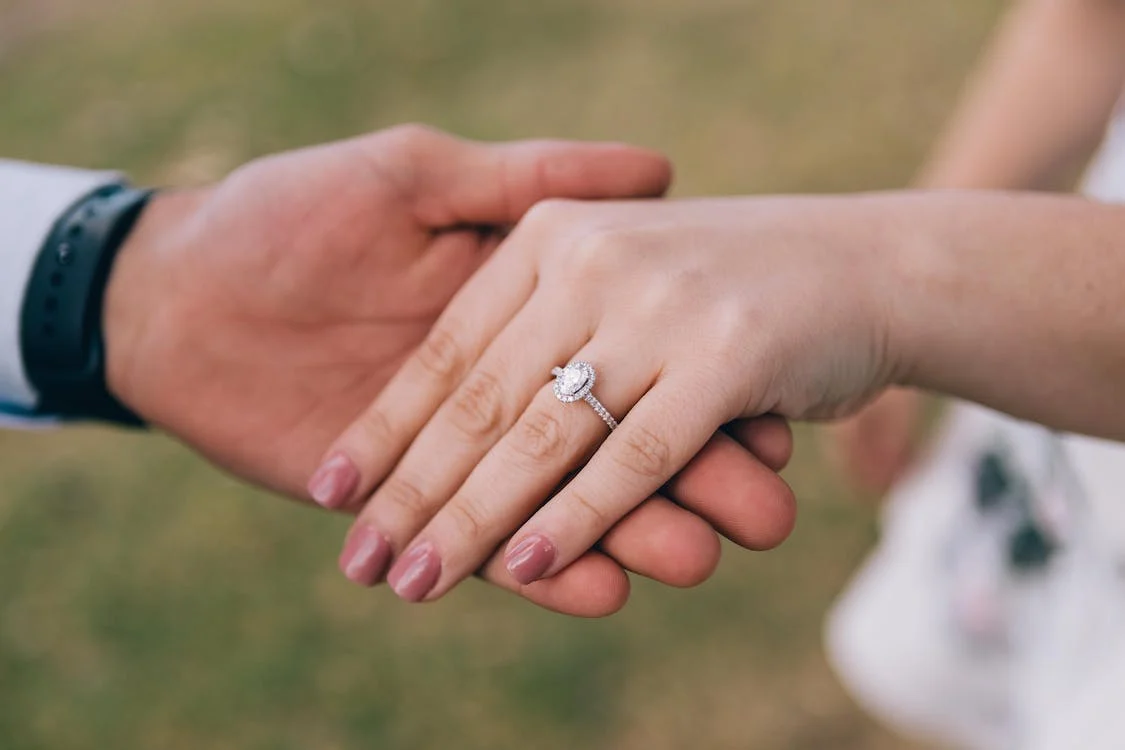While diamonds are the most common center stone for an engagement ring, other gems can create just as stunning rings. Moissanite is another clear gemstone that is exceptionally hard. Diamond engagement rings and Moissanite engagement rings both have a lot of glitters, but which one is perfect for you depends on more than just their sparkle. Composition, color, weight, durability, and cost are all factors to consider when determining which is best for your needs.
Color
The colors of mined diamonds range from ice-white to clear to grey or yellow. No two Diamonds are the same, just like no two snowflakes. Gemstone color diversity can be attributed to the natural environment in which it was grown.
Clear or white Diamonds are considered more expensive and coveted by consumers because of their clarity. In contrast, the meteorite-derived Moissanite is not a gemstone that can be found on Earth. Since it is impossible to find its native form in nature, all Moissanite diamonds are lab-created.
A controlled and regulated environment can be maintained for the most reliable and best results when Moissanites are produced in labs. Moissanites on the market now are all the same shade of white. Moissanites come in a wide spectrum of colors, ranging from D-I or the color wheel’s very top and bottom rungs.
Brilliance
As measured by its brilliance, a gem’s sparkle and fire is an excellent indicator of the stone’s capacity to reflect white light. The gem’s refraction is what gives it its brilliance. In terms of light refraction, Moissanite is superior to Diamond, so it appears brighter.
Because of its crystalline structure, Moissanite should retain its sparkle for longer between cleanings than diamonds, which are more likely to accumulate grease and dirt over time.
Price
Because Diamonds are still popular worldwide for engagement rings, Moissanite costs less than a Diamond. The price of a Moissanite stone fluctuates progressively with size and form, but the price of a diamond varies according to clarity, cut, carat, and other particular features.
Moissanite has a wide range of advantages, including the following:
When comparing Moissanite to diamond, you may not be aware of the various benefits that Moissanite has over a diamond.
Conflict-free: Moissanite’s greatest advantage above any other locally mined stone is that you know you’re wearing ethical jewelry because it was manufactured in a laboratory.
Quality: Because lab-grown moissanite gemstones are made in such a controlled environment, they won’t be sold if a stone doesn’t have crystal clarity or has any noticeable imperfections or blemishes.
High refractive index: The brightness of Moissanite and diamond may be seen when comparing the two gems side by side. This jewel has a High Refractive Index, which allows it to shine brighter than a normal diamond.
Classic appearance: Cubic zirconia may be an option for people who want something other than a diamond. On the other hand, Moissanite does not become foggy over time as cubic zirconia does. On the other hand, a moissanite jewel looks cleaner than a diamond. Moissanite will lose its sparkle more quickly from dirt and oil than a diamond.
Moissanite will last for many generations
Moissanite is a long-lasting gemstone, thanks to its high hardness ratings. Moissanite rings can be passed from generation to generation with proper maintenance. Diamond and moissanite engagement rings have comparable aesthetic features from a logical standpoint.
Their colorless and hardness make them ideal gemstones for jewelry making. With both, you’ll look stunning no matter what you do, and they’ll last a lifetime. If you’re concerned about the ecology, ethics, or cost of a Diamond, you may want to consider Moissanites as an alternative.

